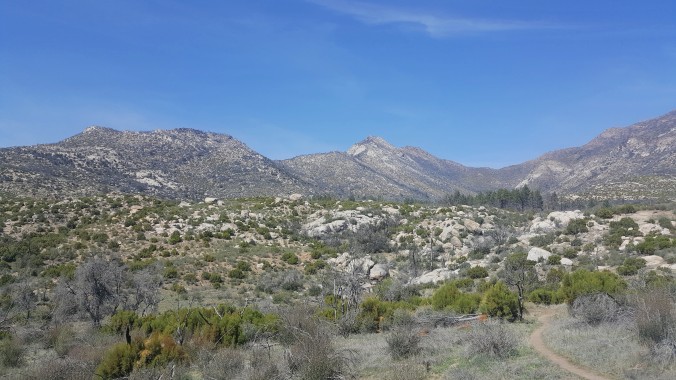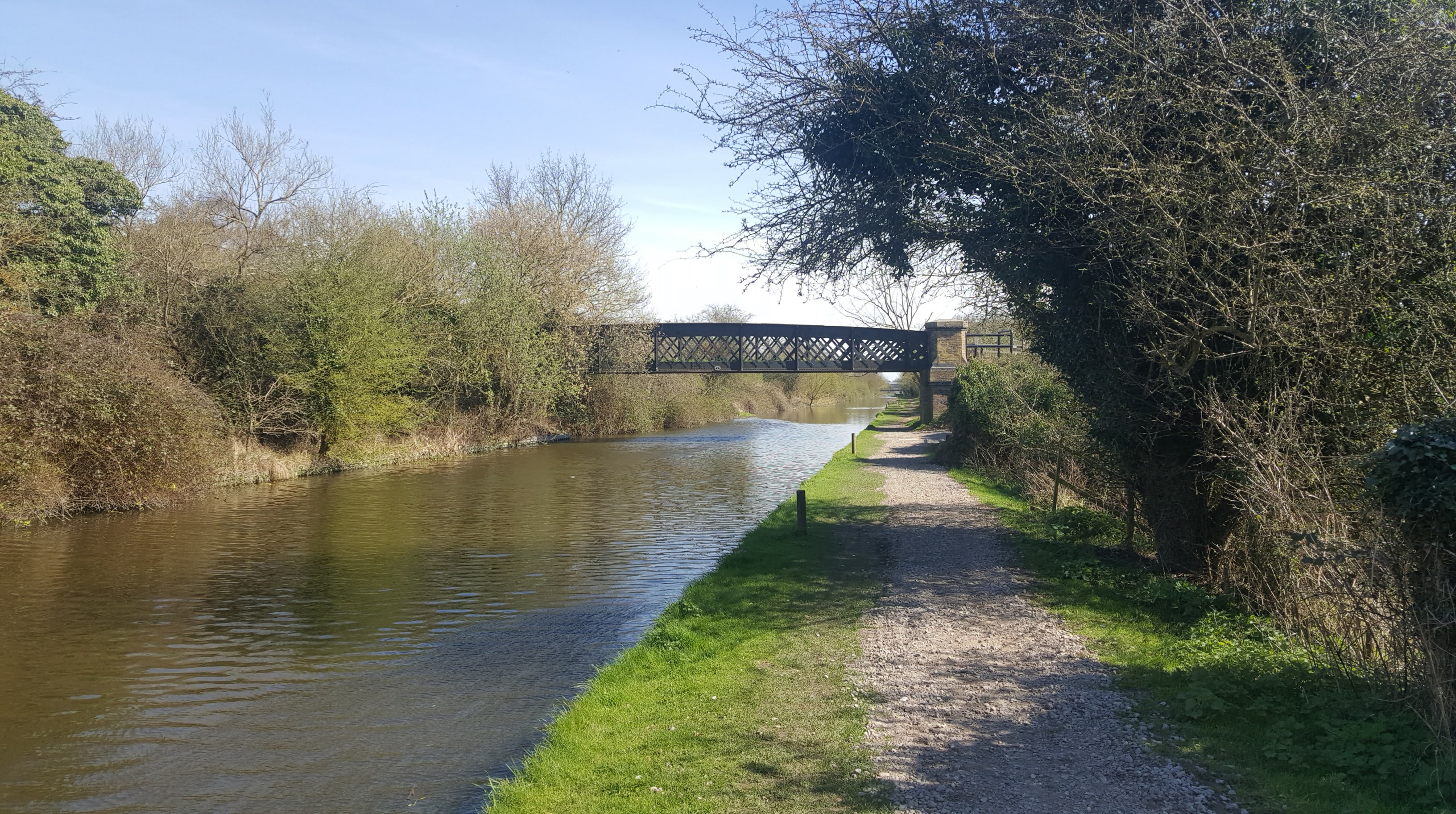To be precise, I walked 342 miles from Mexico to a McDonald’s sat at the foot of the San Gabriel range in a pair of Altra Lone Peak 3.5’s – but it sounds more glamorous to round it up to 350 and omit the fast food stop.
Anyway, here are my thoughts:

FIT
The very first hiker that I bumped into on the Pacific Crest Trail (PCT) was just 40 miles into his hike but was already complaining about his shoes. He called himself The Kid (or perhaps it was Michigan) and he was hiking in a pair of Soloman Sportivas.
This was my first day. I started 40 miles up the trail due to permit issues, and I was already encountering hikers who were falling victim to poorly fitting shoes – from then on, I paid close attention to my feet.

Looking back on the rugged San Jacinto Mountains
Being a runner, I’m used to the “break-in period” with new shoes and so I took the Altras out for a spin on a handful of gentle 5K runs before setting off for SoCal.
My planning paid off and the Altras worked from day one. Not a single blister flared up the entire month that I was in the desert. I would excitedly mention this to fellow hikers who were also wearing Lone Peak’s and, to my surprise, the majority of them had the same experience.
Although entirely anecdotal, the number of people that I met in Altras was impressively high. In fact, The Altras had to be the most popular shoe on trail.
They were so prevalent, it became a running joke that we navigated by Altra footprints. Every now and then, when I would lose my bearings, I knew that if I looked down and saw an Altra footprint in the dirt that I was still heading the right way. Amongst all of these hikers, I only ever met 1 person that had a serious issue with their pair.
The fit, in my personal experience, is good. Perhaps this is a result of the minimal approach that Altra takes when offering support in their shoes. The design features (specifically, the zero drop heel and wide toe box) naturally cater to the biomechanics and form of a broad range of people.
I was happy to enjoy this aspect of the shoe and not have to fret about blisters ending my hike early.
MATERIALS AND QUALITY
The shoes fit well and looked after my feet whilst they were in working condition but, to an extent, the materials let me down.
To my annoyance, my pair had a slight defect in the heel. No one else hiking in the shoe seemed to have this issue, but I managed to permanently disfigure the heel cushioning by lazily slipping the shoes on one morning. I had compressed the cushioning in one shoe and it just refused to bounce back into shape.
This all happened in the days leading up to flying out to the US. I thought it would be a serious problem and so contacted customer service (who very kindly sent out a replacement pair at no charge), but it luckily turned out to be a minor annoyance.

You should be able to spot the difference in the heels of the new (left) and old (right) shoe above. The right-hand shoe is misshapen.
This was the only issue I found with the quality of the shoes. Perhaps if a firmer material was used in the heel then such an issue would be avoided – this would, however, be at the expense of comfort.
As to the lifespan of these shoes, I managed to squeeze just over 500 miles out of my first pair. 350 of those miles were walked in the SoCal desert and the remaining 150 were run in the British countryside.
The tread on the Altras performed reasonably well in both environments, particularly on my permanently muddy local trails in the UK, but in the desert, the tread seemed to wear down at a faster rate.
The general quality of the stitching, seams and materials used is good and, whilst the tread lasts, the shoe grips nicely in a variety of environments. Importantly, the one defect that arose from lacklustre cushioning in the heel was negligible and I managed to enjoy a respectable number of miles before needing a replacement.
Expect your pair to give you 450 to 500 comfortable miles before the Altras give in.
ALTRA SPECIFIC DESIGN FEATURES
Altra famously is the brand that specialises in zero-drop, wide toe box shoes. Their shoes are spacious and differ from the 12mm drop stability shoes that many runners start with. For someone like me, this new feeling felt unnatural at first.

The Lone Peak 3.5’s profile
When I bought the shoes the wide toe box felt so large that I ended up picking up a pair which was a half size too small. Don’t make the same mistake as me and stick to your normal sizing – the space takes time to get used to, but is an essential part of what makes Altras so comfortable.
Secondly, if you have never used zero-drop running shoes, you’ll have to ease yourself into them. It’s a completely new running experience.
Think of it like the moment you took the stabilisers off your bike.
I’m no scientist, but arguably your stabilising and supporting muscles don’t have to work nearly as hard in stability shoes – zero-drop shoes make you more responsible for your form and so unless you have a Mo-Farah/God-like stride, you’ll have to adjust to the change.
Essentially, the breaking-in process comes down to running small distances and running them slowly. For me, this wasn’t hard because, for the first week of running in zero-drop shoes, the pain in my plantar fascia was telling me to slow down. I listened to my feet and quickly fell into a routine of taking my Altras out on slow days only.
This process takes time but take solace in the fact that you are strengthening your feet and maybe even cleaning up your form.

FINAL THOUGHTS
The Lone Peak’s are an incredibly flexible shoe – revered in the thru-hiking community, they’re also a great all-terrain trail running shoe.
Perhaps I have a romanticised view of their quality, but on my hike, they were utterly reliable and I wouldn’t have changed a thing.
If you are looking for a versatile shoe which can introduce you to zero-drop and, in my case, kickstart an obsession with Altras, pick up a pair.



